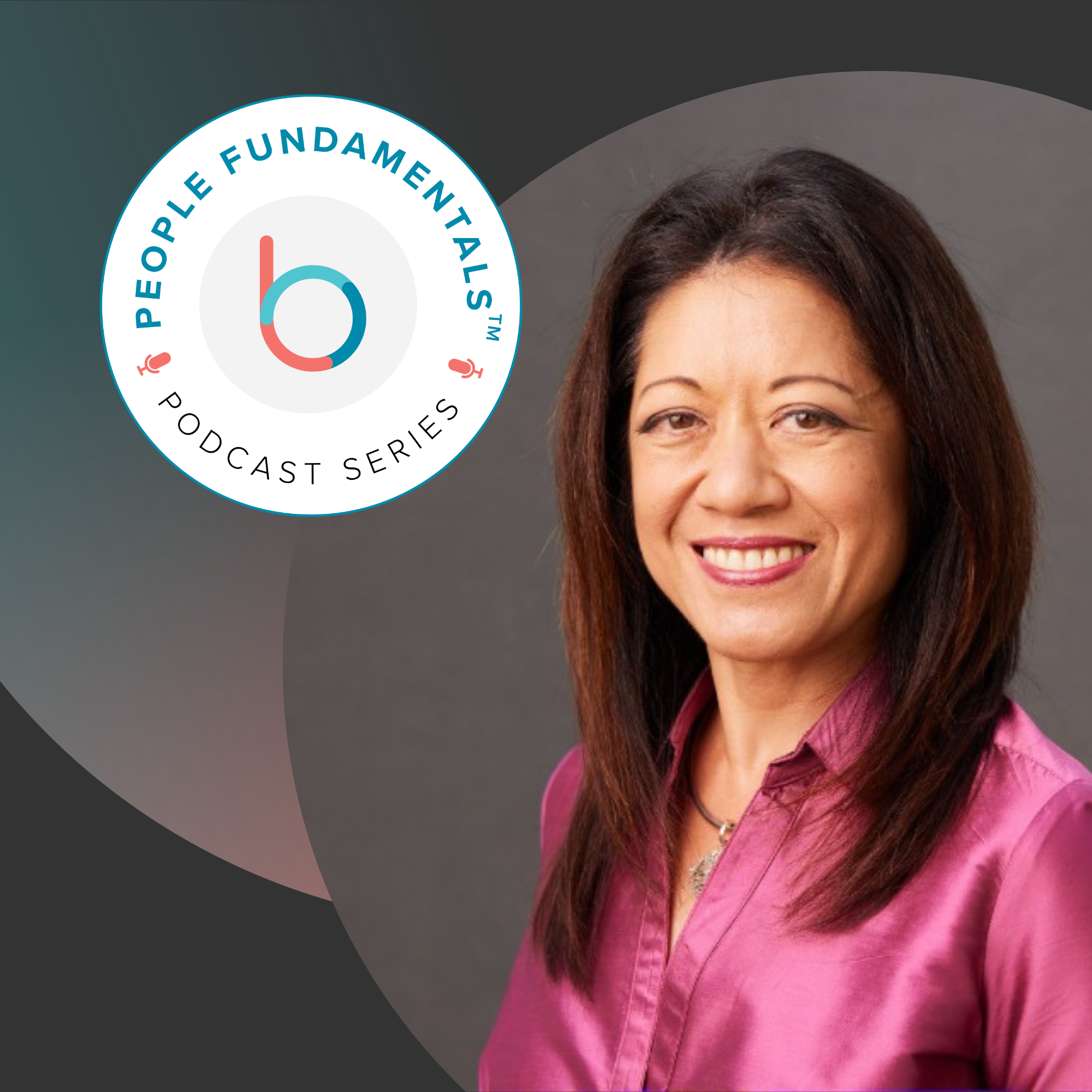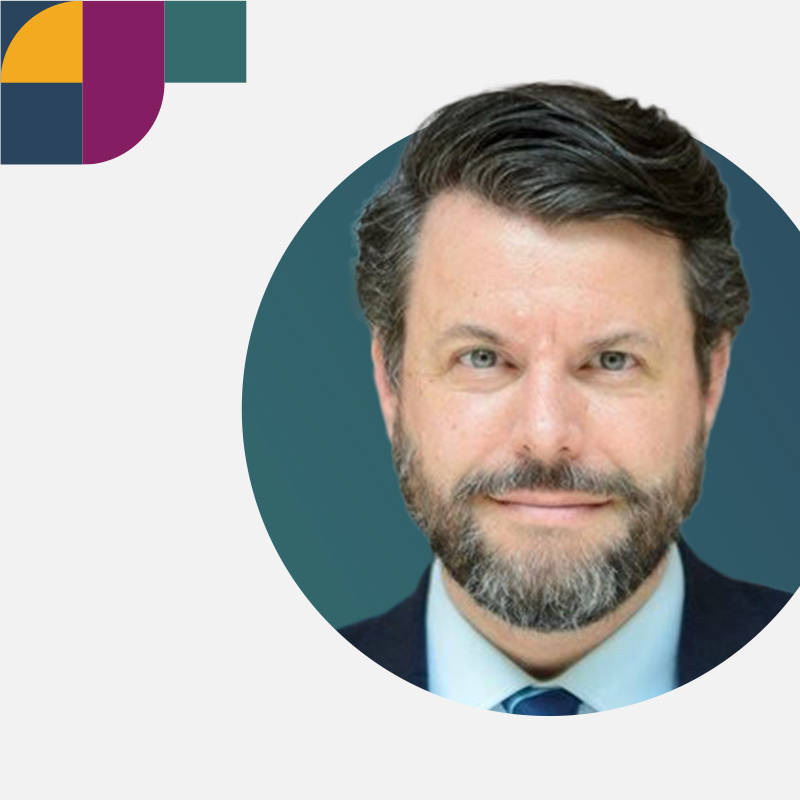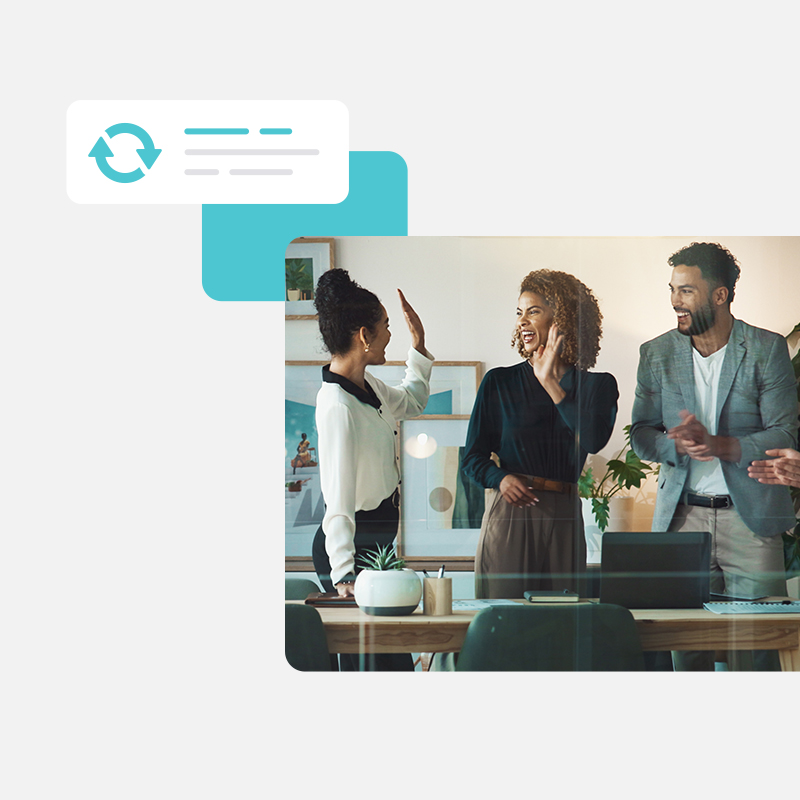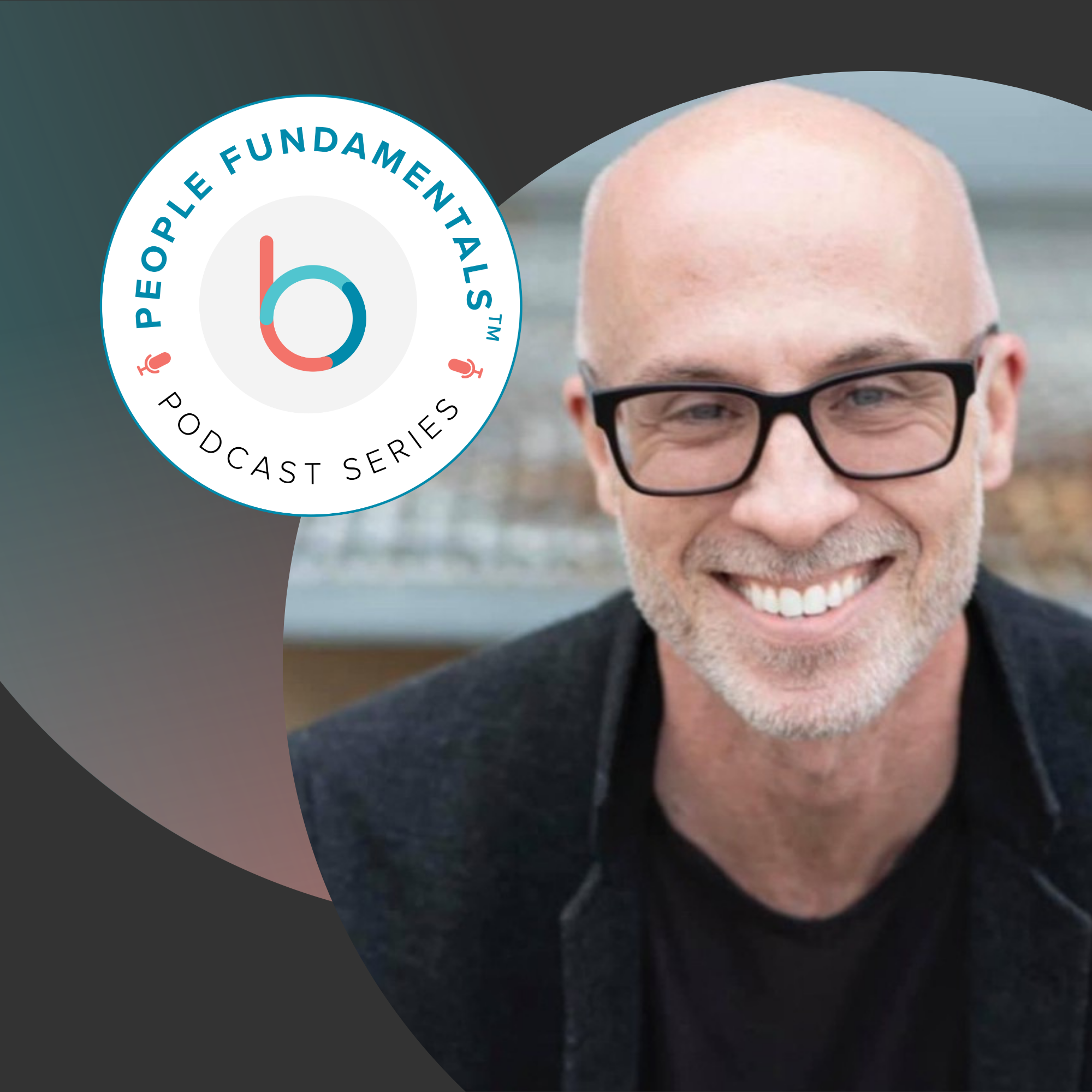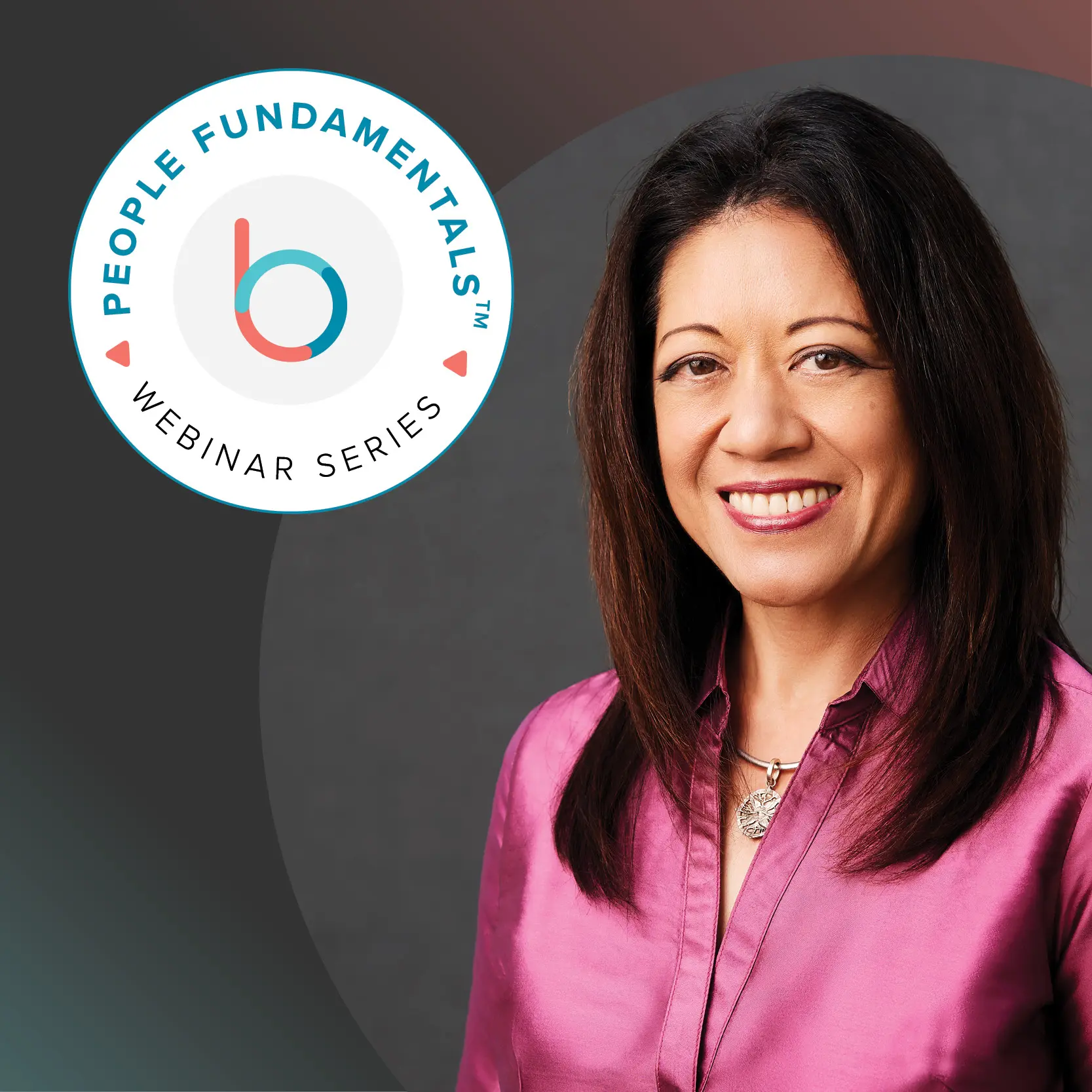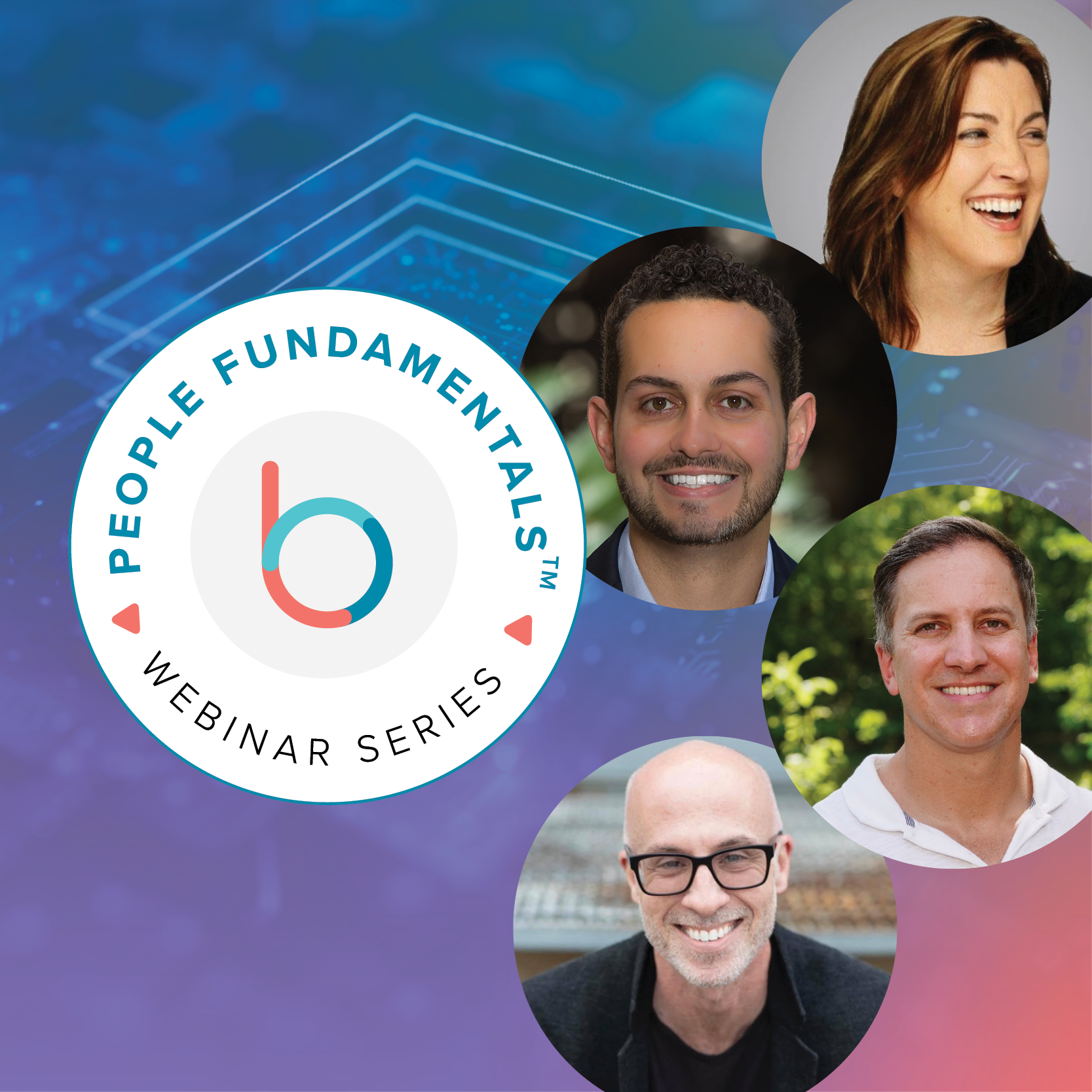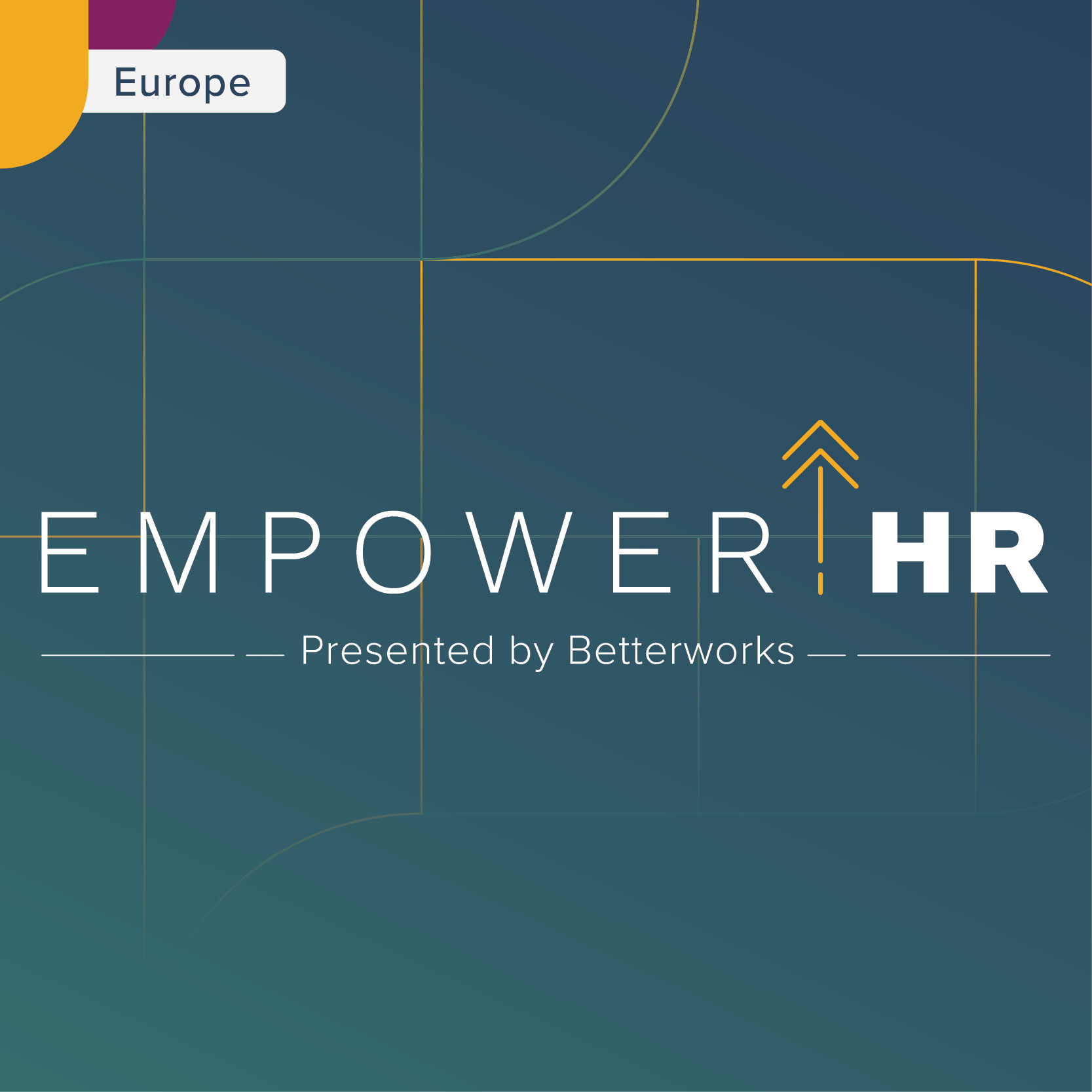On this episode of People Fundamentals, I’m joined by Charlene Li, founder of Quantum Networks Group and a New York Times bestselling author of six books, including The Disruption Mindset and Winning with Generative AI: The 90-Day Blueprint for Success. Charlene is an expert on leadership and organizational transformation. In this conversation, she explores how bringing your whole self to work can profoundly — and positively — shape your organization’s culture and performance.
Charlene shares her unique insights on the importance of psychological safety, the critical role of leadership in modeling cultural behaviors, and why aligning company policies with cultural values is non-negotiable. She emphasizes, in particular, that without these elements, people lose trust in leaders — and the absence of trust can hold employees back.
In this conversation, recorded live at HR Tech 2024 in Las Vegas, Charlene shares her take on the importance of fostering a work environment that promotes authenticity and offers tips for embedding culture into everyday actions.
Tune in to hear stories and insights into creating a supportive, thriving workplace culture.
Subscribe wherever you listen to podcasts: Apple Podcasts | Spotify | YouTube Music
Prioritize psychological safety
Charlene believes that psychological safety is the foundation of an engaged, high-performing workforce. When employees feel secure in expressing themselves, they’re more likely to bring their full talents and creativity to the table.
“When I go to work, I have the safety, the psychological safety, to be able to talk about anything that may be impacting my ability to do work,” she says. “And so I can talk about what’s making me happy and motivated and excited; but I can also talk about what is a barrier, what’s holding me back. … I know that my team, my manager, my company will support me in this.” This sense of security enables employees to share their challenges, ideas, and vulnerabilities — all without fear of judgment.
However, the consequences of not prioritizing psychological safety are stark. “When it’s not there, you do not feel safe, and so [you’ve] got to hunker down, put your head down, and do the minimum possible,” Charlene says. “Don’t extend yourself because it may be unsafe.” When employees don’t feel safe, they withdraw, which significantly limits their potential contributions and stifles innovation. Leaders must actively foster an environment of open dialogue, support, and trust to unlock their team’s full potential.
Model behaviors you want to see
Leadership is central to establishing and nurturing a company culture that supports psychological safety. Charlene shares a powerful example of how T-Mobile’s leadership transformed the company’s culture by modeling the behaviors they wanted to see.
She recounts the story of then-CEO John Legere, who led by example and shifted from a traditional corporate image to embracing a more real and relatable persona. “He went from wearing white buttoned-down shirts to wearing leather jackets and a ton of magenta pink,” Charlene says. “He let his hair grow long. He was wearing sunglasses, riding his motorcycle. His true self came out, and he just let it go.”
By modeling this behavior, and encouraging other leaders to do as well, John gave the entire workforce permission to bring their true selves to work.
This cultural shift wasn’t just about appearances — it was a signal to the entire organization that authenticity and self-expression were valued. When leaders take the initiative to live out the company’s values, they create a ripple effect throughout the organization, empowering employees to follow suit. Leadership behaviors set the tone for the rest of the company, whether it’s encouraging transparency, taking time off, or embracing vulnerability.
Align policies and benefits with cultural goals
But behavior changes at the top aren’t all that you can do to support culture change. They need to be anchored in and aligned with a belief system. To create a lasting and authentic company culture, you need to align policies and benefits with your organization’s core values.
“Culture is made up of two things: beliefs and behaviors,” Chalene says. “And if you have a belief that a whole self is good, but your behavior doesn’t match it … then no one’s going to believe it.” This disconnect can erode trust and undermine any cultural progress, as employees need to see tangible actions backing up the company’s intentions.
Charlene emphasizes that culture isn’t just about lofty goals; it’s about the daily experiences of your employees. Organizations need to be intentional about supporting their people through policies and benefits that reflect their cultural purpose. This alignment is crucial for building trust, engagement, and a sense of belonging within the organization.
By fostering psychological safety, leading by example, and aligning your policies with your values, you can build a workplace where everyone thrives and contributes to a stronger, more resilient culture.
People in This Episode
Charlene Li: LinkedIn
Transcript
Charlene Li:
If you can bring your whole self, you bring the best of everything about your life, and your employer appreciates everything about you, and that you can contribute in so many undetermined ways beyond “just doing my job.” And if it’s appreciated that I’m a leader, I’m a community person, I have special interests and hobbies that could be additive and I can be not just a culture fit, but a culture add, then that changes the dynamic of everything in the culture.
Ashley Litzenberger:
Hi, and welcome to Betterworks’ People Fundamentals podcast. I’m your host, Ashley Litzenberger, senior director of product marketing. Betterworks’ core belief in People Fundamentals revolves around helping HR lead through constant change by focusing on core values like fairness, support, balance, and enabling growth opportunities for employees. These tenets empower everyone in the workforce to strive for excellence, to foster creativity, and to acknowledge each other’s contributions. Betterworks believes that strategic HR leaders can translate these principles into action, shaping their workforce for the better and helping drive meaningful business outcomes.
In this episode, recorded live at HR Tech 2024, I’m so excited to welcome our guest, Charlene Li. Charlene is the founder of Quantum Networks Group and the New York Times bestselling author of six books, including The Disruption Mindset, Open Leadership, and her latest, Winning with Generative AI: The 90-Day Blueprint for Success. She’s also an in-demand speaker who’s inspired audiences at places like the World Economic Forum, TED, and here at HR Tech where she was the keynote speaker.
Charlene shares her insights on how bringing your whole self to work can shape an organization’s culture and boost employee engagement. She talks about the importance of psychological safety, the role of leadership in setting the tone for company culture, and how policies and benefits can genuinely support employees. Charlene also offers practical advice on being intentional about building a strong, supportive culture, backed by some compelling real-world examples. So, if you’re looking to understand how fostering authenticity and safety at work can drive meaningful change, you don’t want to miss this episode.
Charlene, I’m so excited to have you today on the podcast.
Charlene Li:
Thank you for having me.
Ashley Litzenberger:
Yeah. And, before we dive in, sometimes I like to ask folks a little icebreaker question. What was the first job you ever had?
Charlene Li:
Oh, I was just talking about this. I sold Cutco knives.
Ashley Litzenberger:
Oh, my gosh, my cousin sold Cutco knives.
Charlene Li:
And, yeah, so I like to say this is a job you could not do today. I went door-to-door selling knives, so just the concept of that.
Ashley Litzenberger:
On so many levels, you’re right, there are no more door-to-door salesmen. And I don’t know how I would feel if someone asked if they wanted to show me a set of knives.
Charlene Li:
Let me come into your home and show you knives.
Ashley Litzenberger:
What a different world. My cousin got our entire family, and extended family, to buy Cutco knives, so we all have the steak knife set. And it was really nice to support him, but also, it’s just amazing to see how having someone in your family who’s passionate about something ends up igniting everything for everybody else, too.
Charlene Li:
Yeah, it was a great first job.
Ashley Litzenberger:
Oh, my gosh, what were the skills that it taught you, and how was that process?
Charlene Li:
It taught me to believe in something that I was selling and the importance of that, and it also just got me out there to talk to total strangers. Because I was 18, I was not that confident as a kid — and especially selling something that people didn’t necessarily want, but they probably needed. So it’s just learning how to talk about that and do that.
Ashley Litzenberger:
And you now talk very passionately about many things in the HR space, but I think what we’re going to talk about today is bringing your whole self to work. So, tell me, when you say that, what does that mean to you?
Charlene Li:
It means that when I go to work, I have the safety, the psychological safety, to be able to talk about anything that may be impacting my ability to do work. And so I can talk about what’s making me happy and motivated and excited, but I can also talk about what is a barrier, what’s holding me back from being the best performer that day, because we know we can’t be a hundred percent every single day. Sometimes, we’re 120%. Sometimes, we’re 20%. And for me to be very honest and transparent about that so that I am like, “I’m here, I may not be a hundred percent here, but I’m trying my best.” And so, just so you know, I may be distracted, whatever, but I can talk about that and know that my team, my manager, my company will support me in this.
Ashley Litzenberger:
And tell me, when that happens, what are the impacts that it has for you as an employee, and when it’s not there, how does that also make you feel on the flip side?
Charlene Li:
When it’s there, you feel like you’re part of a tribe, that you belong, and that people have got you. They got your back and that, no matter what happens day in, day out at work or outside of work, they’re going to be there to support you and be supportive of that. And when it’s not there, you do not feel safe, and so you got to hunker down, put your head down and do the minimum possible. Don’t extend yourself because it may be unsafe, because, if you extend yourself and show any bit of vulnerability, you’re going to get your head cut off. So stay strong, safe. Never show any vulnerability. Never show like there’s anything wrong. Be strong. Put up a brave face. Let nothing-
Ashley Litzenberger:
And it’s exhausting to do that.
Charlene Li:
And then, when you do that, you’re not bringing your best work. And so I feel like, if you can bring your whole self, you bring the best of everything about your life, and your employer appreciates everything about you in that you can contribute in so many undetermined ways beyond “just doing my job.” And if it’s appreciated that I’m a leader, I’m a community person, I have special interests and hobbies that could be additive and I can be not just a culture fit, but a culture add, then that changes the dynamic of everything in the culture.
Ashley Litzenberger:
It really does, and that is something that I’ve realized as I’ve worked at different organizations. You see individuals who bring their full selves to work, and the way that they change the culture on a team when they’re present or when they’re absent is really significant. We have someone on our team who’s an incredible artist, and they will do pet portraits or they’ll knit little crochet animals and send them to coworkers who have babies. And the way that them bringing their full selves to work unlocks conversation for everyone else and builds a richer fabric for our team to connect over is incredible.
Charlene Li:
And it’s contagious, right? It’s almost like the reverse of the Broken Window Theory, that when people start contributing to this and they see that it’s appreciated, then people will also do that again and again. And, again, I think it’s a way for us to build these really tight-knit networks and connections that otherwise wouldn’t be built. It’s one of the reasons why we want to be connected in the office, so to speak, or be able to come and connect in some way other than just talking about work.
And that’s the danger of remote work, is that all you do is just work with each other. There’s none of that connective tissue. And so even remote companies will know that you have to get people together at some point. You have to have some of that connection that is supportive of why you do work together, because you are creating these personal connections. You’re creating experiences that are shared and memories and stories that are shared.
Ashley Litzenberger:
And that becomes part of your company culture as well. Yep, I was just finishing your sentence. Bringing your full self to work is something that a lot of companies are starting to pay a lot more attention to and talk about a lot more openly about how they want their culture to be one where folks can bring their full selves to work. But it is sometimes really hard to develop that culture. So what is it that shifts from it being a written goal or even a stated goal to actually being an enacted goal and something that is realized at an organization?
Charlene Li:
Well, I believe that culture is made up of two things: beliefs and behaviors. And if you have a belief that a whole self is good, but your behavior doesn’t match it, so you’re saying it, but the behavior doesn’t match it, then no one’s going to believe it. In fact, you’re going to be breaking down trust. And if you have behaviors that do not reflect this new belief, again, it’s not going to be consistent. So you have to look at the beliefs and then you have to look at the behaviors that are associated with those beliefs and also say, “What are the old beliefs that we don’t want to believe anymore,” which are hide yourself, don’t take the chance of exposing something that may be different from somebody else.
I mean, I know as a woman, as a person of color, that I’ve had so many instances when I’ve had to check things at the door, that I couldn’t bring this part of me into work because it felt unsafe to do so. Again, it takes up a lot of energy. And being able to just not have to think about that, I can just bring myself and be myself, bring the best parts of me and not worry about that judgment and, instead, feel a lot of acceptance of that.
Ashley Litzenberger:
I’m curious, what are some of the flags that let you realize, “I can bring my full self to work?” Or what are the things that make you realize maybe, “I want to hold back part of myself, or I don’t feel fully comfortable bringing this in?” What are some of the culture flags or the activities or the actions that people within an organization, HR teams, or managers, might be taking that are giving you either the red flags or the green flags to bring your full self to work?
Charlene Li:
Well, somebody joking about somebody’s food at lunch. Somebody saying, “Oh, so-and-so quit work early today to pick up their kid.” It’s those perceptions. It’s those little things, those behaviors that reflect a belief of a certain way that things have to be, versus saying, “Oh, so-and-so had to leave work today to take care of their kid. I hope they’re okay.” Or, “I’ll cover you. Go and take care of your kid. Family comes first.” Because those are two very different reactions
Ashley Litzenberger:
And very different messages that are being sent across.
Charlene Li:
So it’s very easy to change culture. It’s also very easy to break culture. And we have to be so intentional about it, and we are not intentional about creating the cultures that we want to have.
Ashley Litzenberger:
So how can organizations be more intentional at scale because it does sound to me like you can have managers who are creating a culture where you can be radically vulnerable and bring yourself to work, and there are other places where you might have a teammate that does lead to a more protected team culture.
Charlene Li:
Right. So, as a leadership team or even just within a team itself, you agree these are the behaviors and beliefs that we want to embrace. These are the ones we want to get rid of, jettison, because it’s holding us back to being the type of team we want to be. That’s where it begins, is at that team level.
Ashley Litzenberger:
And being willing to not just say it, but then follow through because-
Charlene Li:
Yeah, you have to. And then, if you make an agreement: these are the new beliefs and those are the old beliefs, whenever you see the old belief show up, you’re like, “No. No. No. Wait. Wait. Wait. Remember, we agreed that this is going to be the new way. My sense is that what you just said is sort of the old way of thinking. Let’s not do that. Let’s try that again. Let’s start over.”
Ashley Litzenberger:
And that’s not just in conversations or in one-on-one meetings or small team meetings where someone is modeling that behavior. It also comes from company policies and benefits and different things that you would offer to back up what it means to bring your whole self to work and have an organization supporting someone’s entire self.
Charlene Li:
Right. I believe that culture is made up of some very structural things like organizational structure. It’s set up in processes, like how you run meetings or how you do performance reviews. But then there’s a soft side of culture, what I call “lore”: the stories, the rituals, the symbols, and using all of this to be able to change your culture because people think it’s a reorg. No. It’s more than that. It’s all the soft things that are just as important as hard structural data that you can write on a piece of paper.
Ashley Litzenberger:
I’m curious, do you have any stories or examples that come to mind of an organization that made the shift and was really intentional about creating especially some lore or some of the softer cultural elements around making it easier for someone to bring their full self to work and be a more whole human-focused organization?
Charlene Li:
I’ll tell you the story of T-Mobile. It was about 10 years ago when they did a whole transformation. The CEO at the time, John Legere, came in. He was like an AT&T executive, white buttoned-down shirt, I mean like clean cut and everything, and he said, “No. T-Mobile is not going to be traditional” — I mean, they were the fourth distant player in telecom and mobile services. And he goes, “If we’re going to do this right. We’re going to be the un-carrier. We’re going to do everything that a carrier doesn’t do.” So they really encouraged people to embrace being the un-carrier, do the things that a carrier never would do, and so they gave this freedom to people to express themselves. And the CEO modeled this. He went from wearing white buttoned-down shirts to wearing leather jackets and a ton of magenta pink.
Ashley Litzenberger:
I love that.
Charlene Li:
He let his hair grow long. He was wearing sunglasses, riding his motorcycle. His true self came out, and he just let it go. I mean, the contrast was huge, and he just became this completely different person. Instead of this buttoned-up executive, he became John. And he allowed other people, all the other people on his executive team, and he said, “Hey, let the people in the call centers. I’ll let all the employees, let them be in the stores the way they want to be. What does un-carrier mean to you?”
Ashley Litzenberger:
That is really powerful, and it does go back to the importance of leadership, at any level, modeling what it means to embody your culture or to really stand by it. It goes back to why it’s so important for your team leaders or your managers to take their vacation and to be public about it and to be public about signing off after work hours not just because it is or isn’t important to them, but because it’s probably important to someone on their team that they feel like they have the permission to do the same things, or that they’re able to take advantage of the flexible work hours or the flexible work locations that your company might offer.
Charlene Li:
Yeah, and when I talked to T-Mobile, they said, “Yeah, we do this.” And inside, even in the stores, they got rid of individual compensation for the salespeople. He said, “The team compensation, that went…” Okay, is that really real? So I went into a couple stores and I talked to the sales representatives and was like, “Tell me what has the change been?” “Oh, it’s been great. This is how we do it. “If I buy something from you, who gets a benefit?” “Oh, we all share the benefit. We’re all part of this team together.”
Ashley Litzenberger:
But that’s really incredible because then everyone’s trying to lift everyone up, because everyone benefits from each other’s success as opposed to being more in individual competition with someone else.
Charlene Li:
And that was a structural change and also a culture change. That’s a change that came with that, too.
Ashley Litzenberger:
And that’s really powerful. And then you get to see people trying new things and not feeling like they’re quite at risk at the same level. They can actually try a new way of engaging a customer. They can bring their full self and bring more humor into it, or they can be more direct. They can play around with it, have more freedom to test something out, knowing there is the safety net of the entire team to support them, to give them feedback, and also to encourage them.
Charlene Li:
Right. I mean, again, this is additive, and once you get that flywheel going, it can be very difficult. But then to sustain it and to accelerate it, it becomes easier and easier when everything is aligned around certain beliefs and behaviors to create that culture that you want.
Ashley Litzenberger:
And something else that we’ve been talking about being really important about bringing your full self to work is that you feel engaged and you feel like you have a relationship with the organization, so you can weather change or disruption as it comes. And, as we’ve been talking about recently, there’s been so much disruption in the HR space and in the business space for every employee no matter where you are in an organization.
Charlene Li:
Right, and the reason I started looking at this is that, in order to go through a disruptive transformation — it is so, so hard. And so, you do not take this on lightly. You want to prepare yourself and have the strongest culture possible because you know that the strategy that you set out with is not going to be the one that you have a quarter from now. It is probably going to change. If you’re doing something truly disruptive, you don’t know exactly where it’s going to end up, so you have to have a team that inherently trusts each other, that you know everyone’s going to have their back. You’re going to go to the very edge of what is possible and know that, if one person should stumble and fall, they’ll be there to pick you up, have your back, and you can keep going because you’re doing this together and you know you’re going to be better off doing it as a team.
And you have to have that level of trust, so, being able to bring your full self is about trust-building. It’s about, again, building that sense of tribe and belonging and knowing that, no matter what happens, we’re going to be okay. And that is the root of confidence, not knowing that you’re going to be absolutely sure to succeed, but knowing, whether you succeed or fail, whatever, you’re going to be fine.
Ashley Litzenberger:
Yeah. It almost sounds like, in order for an organization to transform or go through any type of disruptive change, it could be as small as changing out a piece of software or as large as changing your entire company’s strategy, you need a strong culture in order to withstand or to be able to weather, let alone succeed, in whatever that change is going to be.
Charlene Li:
Yeah. Agreed. I always like to say a quote that was attributed to Peter Drucker: “Culture eats strategy for breakfast every day.”
Ashley Litzenberger:
Yeah.
Charlene Li:
And you could have the most brilliant strategy and a terrible culture, and nothing will happen. You could have a great culture and mediocre strategy, and you will accomplish the impossible.
Ashley Litzenberger:
Because you will learn that the strategy doesn’t work and you will find the way through to the right one.
Charlene Li:
And you will make it work.
Ashley Litzenberger:
So, as practitioners who are thinking about building culture and also implementing whatever significant change is on the horizon or whatever five significant changes are on the horizon, knowing any HR team, what can they think about? Is it making small changes over time? Is it knowing what your big milestone is? How do you actually get from where you are today to implementing really big change, but also doing that while maintaining your culture?
Charlene Li:
Yeah. I think it’s so important to think big. Think strategically. Think 18 months out is what I believe needs to happen because it stretches you beyond the current planning cycle that you have, a 12-month budget. A budget is not a strategy. It’s not even a plan. It’s just a budget, and so that’s what we argue about all the time, like, “What’s our budget going to be over the next 12 months especially now as we go into the fall planning season?” That’s not a strategy. A strategy says, “Where do we want to be? Where do we want to play? How do we want to win? And who are the people going to be along on this ride, on this journey?”
And so, if you can look out 18 months, big, huge transformations, you know what you have to do today to get to there, and every quarter you break it out so it’s a six-quarter walk and you keep at the end of each quarter, reiterate the plan and add another quarter to it so it’s a rolling 18-month plan. People look at me like, “Oh, my gosh, I can’t even imagine doing that.” But if you have a clear strategy, it becomes so easy because you know where you want to head, and each quarter, go, “Did we make progress? Where are we now?” We assess where we are, then we keep moving.
And here’s the thing, my study of disruptive organizations who are good at disrupting themselves and disrupting markets, they don’t do big, huge leaps. What they do is they know where they want to head and they take lots and lots of little iterations very quickly.
Ashley Litzenberger:
And what do you mean by quickly because quickly for a large organization could be six to 12 months?
Charlene Li:
Right. I talked to one organization like, “Oh, no, we do big transformations, like big, huge, new product launches once every two years. We’re still recovering from the last one,” is what they said when I got to them. And then I talked to another organization like, “Oh, yeah, we make product iterations every two days,” and so they experiment, figure it out, make a change, see what happens. And then they did another experiment and then make another change two days later. Because they’re making so many changes so quickly, they’re seeing what works, what doesn’t work. Again, they have that safety to be able to try a lot of things very quickly figure out, “Oh, I’m standing in this new place now. Is it better or is it worse? It’s worse. Let’s go try something different.” But unless you do that and have a great relationship with failure, you’re not going to be able to succeed and go fast.
Ashley Litzenberger:
Well, in some of what that moving quickly does in making lots of rapid changes, whether they’re small or whether they’re big, it creates lots of opportunities for success and failure, which normalizes both of them. And so, unlike that organization that’s maybe making one change every two years and is still in recovery because it was so shocking to the system, and was probably really emotionally exhausting for an employee who has a lot on the line for the one change for the next 24 months, if you’re in a place where you’re rapidly changing, it creates room for more testing because, even if something fails, you’re going to be changing it again in two days or two weeks or two months.
Charlene Li:
I mean, imagine if you only do a change every two years. It has to be right, so you’re not going to make any decision until you know it’s going to be right.
Ashley Litzenberger:
And then you’re going to miss the window.
Charlene Li:
And then you fall behind because your customer’s already moved, so you’re always going to be behind your customer. And disruptive organizations figure out where their customers are going to be, make a bet and start moving towards that customer without knowing exactly where that customer is going to end up, and not exactly knowing how the technology is going to shape up, and not exactly knowing, “Do we even have the ability to make this product happen?” And you have to have a belief that we’re going to figure it out along the way.
So I believe the difference between anxiety and excitement about something is confidence. And confidence is simply this: that when you start something, you’re going to be okay no matter what happens. It could be a success. It could be failure. No matter what happens, you’re going to be okay. You’re going to be fine.
Ashley Litzenberger:
And that comes back to bringing your whole self to work. Whereas, if you feel like you are present and you’re supported at work, you can be confident. But if you are checking parts of yourself at the door, you’re not bringing your whole self in, you’re not going to be able to stand with the same confidence with your team, and you might actually be holding your company back or your company might… A better way to put it is your company is holding itself back, because the great ideas that your employees have that they’re checking at the door, which, because it’s based on their previous experiences that they don’t think are accepted or their points of view that they don’t think are going to be heard by whoever is in a different position, could be the answer, and you’re missing out.
Charlene Li:
Again, it says, “Do you value each individual for the contributions they can make?” And the concern is that, well, I don’t want every contribution to come in, but that’s why a strategy is so important. It’s to say, “These are the things we want to do and things that we don’t want to do.” And so a good employee, like, “I have these gifts, these skills, these levels of expertise, these perspectives that can help us get to this point so it’s directed.” Otherwise, it just goes everywhere. And so this is what bring your full self, but very specific selves that can help us accomplish a common goal, because that’s what organizations are for. I believe organizations are there to maximize human potential to accomplish a common objective.
Ashley Litzenberger:
What are some institutional practices that HR teams can start bringing in or can continue to bring in or reinforce that help people bring their full selves to work? I’m wondering how that relates to the types of benefits that someone, an organization, might choose to offer and invest in or the way that you run performance reviews or have coaching conversations with managers. What are some of the things that companies can do that will signal, “Hey, we care about not just what you’re doing in your job today, but who you are, who you want to be, and what you need to get you through and be supported in your stage in life today?”
Charlene Li:
I think there are two things. Again, there’s the individual relationship between a manager and the person they’re managing, because that — again, we always talk about the highest, the most determinant thing for employee engagement and happiness is a direct manager, the number one determinant. So train that manager on how to have these conversations, to be curious that, when there are opportunities, and how to foster opportunities for that kind of sharing, and a genuine interest that you show in the well-being of this person, so getting to know them. And so many organizations shy away from this because it feels like you’re mixing work and personal. Work and personal are inextricably connected to each other, so, the sooner we can understand that and respect that to say, “I’m not asking you to tell me everything. But I’m here to support everything that you want to do with all parts of your life.”
And work is only part of it. So, for me, to understand how your personal life and your professional life can live in harmony with each other, and how it can support that harmony, and you as an employee, just saying that, I guarantee they will never have heard that from a manager before.
Ashley Litzenberger:
Yeah.
Charlene Li:
Right?
Ashley Litzenberger:
A lot of people have not.
Charlene Li:
Right, and so you say, “Look, there’ll be days when you can give extra work. There’ll be days when you can’t give as much as you can because of whatever is going on in your life.” You may be sick. You may be distracted. There may be something emotional that’s going on in your life and your family. So, whatever it is, bring that, and we can cover for you and then, when somebody else has that, you’ll cover for them.
Ashley Litzenberger:
And a huge part of it is just having the benefits that you offer, having the training for your managers, and then making sure that that word is getting out and shared consistently. So it’s not just having a manager be supportive and wanting to support them, but actually knowing what you can do, what they can do as a manager. So you don’t have to get into the details of someone’s personal life, but you can find out, “Hey, this person is struggling, and I probably want to connect them with someone on HR to see what benefits might work for them,” and you can create a space for them to have those confidential conversations and see what structures, what supports and what scaffolding is appropriate. And you can have them connected to the right person, but so much of that is just making sure that managers know what’s available and know what they are able to offer to their employees.
Charlene Li:
And we don’t give them that training. Again, we have very little training about how do you have a personal conversation with somebody about what’s going on in their lives to see how we can support them and how it’s impacting their work. I had an employee who, his performance just plummeted. And I sat down, like, “What’s going on? I mean, I’ve noticed this is not the way you normally do. I’m going to have to put you on a performance improvement plan,” and he shared that he was going through something in his life.
He didn’t share what it was. And you don’t need to share, but it’s good to know. And, again, like you were saying, “Here are the resources. This is how we can support you, and this is the way I see us scaffolding you back into the performance that you were at before.” And he came out of it after about three months or so just brilliantly. And he even talks, to this day, about how grateful he was that we had that conversation, he got that support, even if it was just the fact that we understood that he was going through something and that we were going to be here for him.
And one of the reasons he was tanking is that he just wasn’t able to talk about even the fact that he was having an issue. And just having that knowledge and knowing that we were understanding and that he wasn’t about to be fired imminently, it just reduced that load. But also set the clear expectations. “You need to improve, and we’re going to support you in that improvement. We’re going to help you back to the place where you were before.”
Ashley Litzenberger:
Well, and that’s really important, going back to your conversation around not just talking the talk, but walking the walk, performance improvement plans, or PIPs, they’re meant to bring someone back into high performance. But, so often, an employee hears that they’re on one, and it’s a signal that they need to look for a job or that they’re being managed out of an organization. And so to see a company actually stop and say, “Here’s the purpose of this plan, and it’s actually to get you back up and running at full capacity,” and to demonstrate that and bring folks off of them, that’s really powerful. That is actually showing that you are there for the employee and you are supporting them and you’re actually structuring it to give them that support, not just to document any information to justify taking them out of the workforce.
Charlene Li:
And it can go the other way, too. I’ve sat down with some employees and I said, “The work isn’t at the level that we expect and that you expected. It’s hard, for both of us. I have a performance improvement plan here that we can put you on, or we can have a different conversation to say, ‘Is this the right fit for you?’ And if it’s not, then we will do everything possible to find you your next job. And we’re going to ask in return that you help us find your replacement.” That’s not a conversation you normally have with somebody.
Ashley Litzenberger:
No, but think about how powerful that is to feel like you are supported by your employer to find a new role or a new organization that actually fits your needs and also the trust that you get from your organization to help find someone who’s going to do the work that you’re supposed to be doing in the right way or in a way that is fulfilling for that person.
Charlene Li:
Right. And, again, the only way you can do that is if there’s that level of trust that you are looking out for their best. I like to say to employees when they start, “We’re going to talk about your last day of work on your first day of work because, at some point, you’re going to leave. Let’s not beat each other around the bush. You’re going to leave at some point, most likely. Right? And I want to know about that far in advance so that we can talk about what that last day is going to look like. We’re going to celebrate the time that we work together. We’re going to wish you the best on the next day in your next journey. And I hope that six months before we decide that this is going to be the end of our current status of working together, we know what that looks like so we can plan it.”
You can plan. Everybody can know what this looks like. And because our relationship is going to be for life, we’re going to be on your LinkedIn page, so let’s think about what that’s going to look like instead of saying, “You only matter to me while you’re working here.” And bring the whole self says, “I’m also going to think about your future. I’m going to invest in your future to be the best, most employable person you can be. Ideally, you work with us still, but your path may lead someplace else, and that’s fine.”
Ashley Litzenberger:
And then, if you’ve actually done that and you’ve supported an employee to grow in the places that they want to grow and to pursue the career that they find fulfilling, they become someone who is a culture ambassador for you and your organization or you as a manager, and then you start getting referrals. “You have to work for this person or you have to work for this company. They changed my life.” And that is really the best example of someone who’s able to bring their full self to work and a company who’s really standing behind that, when you have your employees and especially your former employees saying, “Those were some of the best times. That was life-changing for me,” for this reason or for that reason.
Charlene Li:
It was so fun. I got a message before I came here today that one of my employees I hired straight out of college is over in a booth-
Ashley Litzenberger:
Oh, my gosh.
Charlene Li:
… right here. And so I haven’t seen him in 25 years. And Sean and I were just talking like, “Remember those times? They were crazy. You had the best team.” And he goes, “Thank you so much for hiring me out of college. I knew nothing. You gave me a chance.” And, again, I saw his name pop up on my LinkedIn connection, like, “Oh, my gosh, here he is,” and so just to be able to have that connection again. And I do believe that, if you craft these relationships in such a way, you’re looking at this as something you’re going to carry through the rest of your life because you spend so much of your time and energy into this one endeavor, how could you not be connected? And knowing, again, he knew coming out of college that we were investing in him, and that it set him off for the rest of his life and his career. And it’s so gratifying.
Ashley Litzenberger:
And now you can see where he’s gone, and you will still be in touch and know where he is going. And knowing that those personal connections, those opportunities that get unlocked because someone was able to have a vulnerable conversation with their manager or a vulnerable conversation with their HR team about wanting to pursue a different line of work, or needing some additional help, or talking about a workplace adjustment that they needed to be productive in their role, those things are so incredibly important for not only building loyalty to an organization but building confidence in the individual so they can continue to just bring their best self to everything that they do moving forward.
Charlene Li:
Yeah, I really do believe that organizations are here to accomplish a particular purpose and goal, in that the people who commit themselves to accomplishing that, we’re doing this together, and it’s a shame if you don’t try to maximize every single person’s potential again in that particular shared objective and aligned purpose, but also for the rest of their lives. That’s our responsibility, is to prepare people not only to do the job at hand, but to prepare them for the rest of their lives, too, as well. And we know that what we learn at work applies to personal lives. I’ve learned some of the best leadership lessons from my family. And my family has given me so many lessons that I take back to work, and so how can we ever deny ourselves access to that, and conversations around that? It’d just be a shame if we cut it off.
Ashley Litzenberger:
I wholeheartedly agree. This has been such a fun conversation. Thank you so much for coming and speaking with us today.
Charlene Li:
Thank you so much for reaching out, and thank you for having me. You’re a fantastic interviewer.
Ashley Litzenberger:
Have a wonderful rest of your day and safe travels as you go on.
Charlene Li:
Thank you so much.
Ashley Litzenberger:
As we wrap up today’s conversation with Charlene, let’s consider how we can apply some of these powerful insights to bring our whole selves to work. First, prioritize psychological safety. As Charlene emphasized, when employees feel safe to express their true selves, they contribute more meaningfully to the organization. Encourage open dialogue, listen actively, and create an environment where everyone feels supported and valued.
Second, model behaviors you want to see. Leadership plays a crucial role in setting the tone for company culture. Whether it’s embracing transparency, taking time off, or encouraging vulnerability, your actions as a leader will guide others to follow suit.
Finally, align your policies and benefits with your cultural goals. It’s not just about having the right intentions. It’s about backing them up with concrete actions. Review your company’s policies and ensure they genuinely support your employees’ well-being, and allow them to bring their whole selves to work. These strategies are about more than just maintaining a positive culture. They’re about actively building a stronger, more engaged workforce. By fostering psychological safety, leading by example, and aligning your policies with your values, you can create an environment where everyone thrives.
Be sure and stay tuned for our next episode of the People Fundamentals podcast. Subscribe to us on Apple Podcasts, Spotify, or YouTube Music. And if you like what you hear, share us with your friends and colleagues. We’ll see you again soon.
